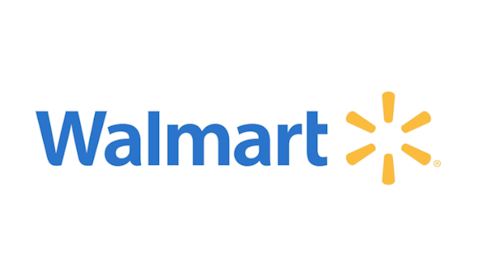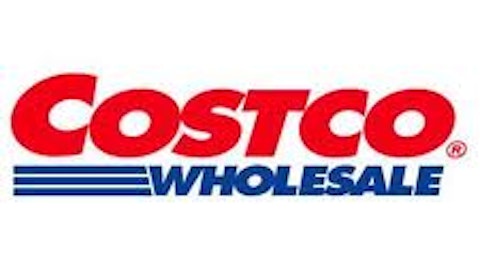When a new Chief Executive Officer (CEO) takes over, he or she usually wants to start off unencumbered by past management mistakes. The new boss’ first moves often set the stage, and just stabilizing the business can look like a significant achievement. It’s worth monitoring these CEO changes since, if the measures are taken effectively, the company’s shares usually react quite positively to any perceived accomplishment.
One of the first steps a new CEO usually takes is reducing expectations. Diminishing optimism for the near term is a way to lower the bar for future results, as well as buy time to implement new strategies. Reducing expectations also provides cover for a second step–taking significant charge-offs. These charges, readily blamed on prior leadership, typically clear the deck for better profits later. Finally, new CEOs often implement a cost reduction plan. The plan’s short-term expense is usually overlooked as a one-time thing amid the promises of better future results.
A recent case
Best Buy Co., Inc. (NYSE:BBY) is a recent example of this scenario. New CEO Hubert Joly, who started work in September 2012, gave initial guidance for free cash flow in the range of $850 million to $1.05 billion for the fiscal year 2013. This was a significant reduction from previous management’s range of $1.2 to $1.5 billion. In January 2013, Joly dropped expectations further to $500 million. When final fiscal year 2013 figures were reported in March 2013, adjusted free cash flow ended up being $965 million, beating the revised-revised guidance by $465 million.
The company also recorded fourth quarter 2013 pre-tax impairment charges of over $1 billion, primarily to reflect the write-offs of goodwill and store closures. Also included were some severance charges associated with the implementation of a comprehensive cost reduction plan. Since this earnings release, the market has greatly rewarded Best Buy as the company’s better than expected performance bolstered optimism about the company’s ability to stabilize itself.
Some interesting new CEO situations
Because this scenario is not unusual, it often pays to look into CEO changes. A couple of interesting ones are at Big Lots, Inc. (NYSE:BIG) and Safeway Inc. (NYSE:SWY).
Big Lots, Inc. (NYSE:BIG) is a large closeout retailer with around $5.4 billion in annual sales. Its new CEO, David Campisi, started on May 3 and could have already started to bring down expectations. On May 30, Big Lots cut its earnings outlook for the year to between $2.87 and $3.12 per share, from $3.05 to $3.25 per share, below analyst estimates.
The company’s guidance for the next quarter also seems pretty downbeat. They are expecting $0.17 to $0.27 per share, compared to $0.36 per share for the same period last year with net sales in the range of +1% to -1%, and comparable stores sales in the range of -2% to -4%. This is a seemingly sharp decline to their latest quarter’s reported adjusted income of $0.61 per share versus $0.68 per share in the prior year, and net sales are supposed to increase 1.3%, with comp sales for U.S. stores down 2.9%.
Big Lots, Inc. (NYSE:BIG) looks interestingly priced for any expectation beats. Based on estimated annual sales of $5.4 billion and cash earnings of $211 million, at the low end of guidance the company’s fair value would be around $37 to $44 a share at a fairly conservative market multiple of 10 to 12.
Safeway Inc. (NYSE:SWY) is a large supermarket operator with over $44 billion in sales. It named Robert Edwards as the new CEO in May. Like the rest of its industry, the company has been under intense competitive pressure. In the latest quarter ending March 23, the company reported decent earnings of $0.35 per share, compared with first quarter 2012 net of $0.30 per share. Identical-store sales increased 1.5% (excluding fuel), while total sales were $10.0 billion, essentially flat year-over-year. Safeway Inc. (NYSE:SWY)’s guidance for 2013 is $2.25 to $2.45 in earnings per share with free cash flow at $850 million to $950 million.
It will be interesting to see if Mr. Edwards follows the new CEO scenario. Given the tough operating environment, reducing expectations by lowering guidance in the next earnings release is not out of the question. If he does issue a warning, any drop in the shares may be appealing. With sales of around $45.0 billion and cash earnings of $1.1 billion, Safeway’s reasonable business value looks around $28 per share given a current conservative industry multiple of 6.
Not all situations are interesting
Not all executive changeovers are compelling, however. Tim Hortons Inc. (USA) (NYSE:THI), a large Canadian chain of donut shops, is an example of this. New CEO Marc Caira will lead the company starting on July 2. Tim Hortons Inc. (USA) (NYSE:THI) reported a mixed last quarter, with a 1.4% rise in revenue to $728 million and net income per share at an adjusted $0.61 per share, compared to $0.56 per share a year earlier. Same store sales were down by 0.5% in the U.S. and 0.3% in Canada, hurt by tough weather and heightened competition.
Though the company had lukewarm quarterly results and an upcoming CEO change, there were a couple of reasons why the situation at Tim Hortons Inc. (USA) (NYSE:THI) wasn’t that interesting. One is that hedge fund Highfields Capital, which owns about 4% of the shares, has been pressuring the company to take on new debt to buy back shares and stop further U.S. expansion. With a hedge fund on its back, the company is limited as to how much it can actually lower expectations. Plus, the company’s shares already look pretty enthusiastically priced. Based on estimated annual sales of $3.3 billion and cash earnings of $437 million, the shares trade at an aggressive 18.5 multiple.
Conclusion
When a new CEO comes on board, he or she likes to start with a clean slate, subsequently downplaying expectations and taking significant charge-offs that often set the stage for later stock price gains. Investigating companies with a change in the executive suite is an effective way to position yourself to a piece of those profits.
The article Why a New CEO Is a New Opportunity to Profit originally appeared on Fool.com and is written by Bob Chandler.
Bob Chandler has a long position in Big Lots. The Motley Fool owns shares of Big Lots. Bob is a member of The Motley Fool Blog Network — entries represent the personal opinion of the blogger and are not formally edited.
Copyright © 1995 – 2013 The Motley Fool, LLC. All rights reserved. The Motley Fool has a disclosure policy.






